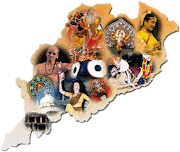The Kalinga-India Foundation was launched at the Sri Lankan High Commission here on Thursday by High Commissioner Prasad Kariyaswasam and India's former foreign secretary Lalit Mansingh. The foundation, based in Gurgaon is part of Kariyawasam's endeavours on developing unique ties with individual Indian states on the basis of their cultural linkages with the island nation.
Besides spearheading initiatives to build upon the common heritage between Odisha-- traditionally known as Kalinga-- and Sri Lanka, the foundation would encourage investment to exploit the human and mineral resources of the two. It would also promote research in socio-cultural and economic ties and give institutional support to scholars and artistes. The more visible impact of the foundation would be to promote and facilitate the visits of tourists and pilgrims to sites in two regions.
Mansingh, a recipient of Odisha's Kharavela Samman said, “In the last decade, the state has had political stability and we get dozens of proposals for investment. The foundation would facilitate entrepreneurs from Odisha and Sri Lanka to go for joint ventures.” He added that the strategic locations of Lankan and Odia ports offers easy access to the markets of South East Asia.
Mr. Kariyawasam said that reinvigorating the ancient links of Lanka to Kalinga with a productive, vibrant and stable relationship with Odisha would complement robust ties with India. “When South Asia and Asia rise, our two regions that once controlled the sea trade at the time may also rise,” he said.
Besides a common Buddhist heritage, Sinhala kings have been from Kalinga. The founder of the Sinhala race was Kalinga's Prince Vijaya and the tooth relic of the Buddha in Kandy -- considered a national symbol of Lanka-- was also brought Dantapura in Kalinga.
Kariyawasam who is set to take on the key diplomatic role of Ambassador to the United States, had earlier facilitated the establishment of a temple to Sita near Nuwara Eliya sponsored by the Madhya Pradesh government. The High Commission has taken keen interest in participating and providing inputs to the Sanchi University of Buddhist-Indic Studies in MP.
The relationship with Odisha is linked to the rise of state's mining industry. The cultural, linguistic and behavioural similarities of Odisha and Lanka in addition to sites of common heritage like the Buddhist Diamond circuit of monuments in state are focus areas of the foundation.
Among the invitees senior politician KP Singh Deo, leader of the Biju Janata Dal in the Lok Sabha-- Bhartruhari Mahtab, renowned hotelier T. Banambar Patra, industrialist K. Madhusudana Choudary, artist Jatin Das, economist Santosh Panda, former Odisha Chief Secretary Debi Prasad Bagchi and several serving and former bureaucrats.





